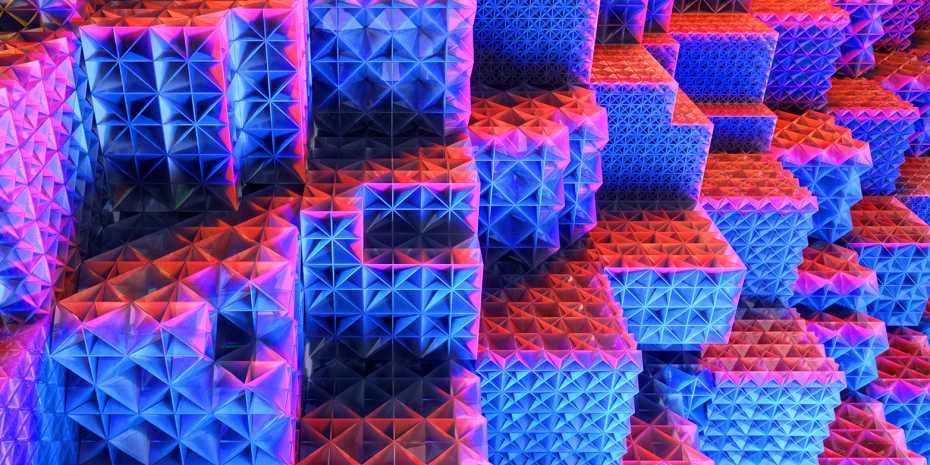Dec 13 2018
With 3D printing and other additive production methods, it is possible to create materials with internal structures of formerly inconceivable complexity. This is exciting for lightweight construction, too, as it enables the development of materials that have the maximum possible share of interior voids (to render the materials as light as possible) but are concurrently as strong as possible. To achieve this necessitates that the internal structures be smartly organized for highest efficiency.
 Plate-lattices will be the design of choice for future lightweight porous materials (Visualizations: ETH Zurich/Marc Day)
Plate-lattices will be the design of choice for future lightweight porous materials (Visualizations: ETH Zurich/Marc Day)
A study team from ETH Zurich and MIT led by Dirk Mohr, Professor of Computational Modeling of Materials in Manufacturing, has designed and fabricated material architectures that are similarly strong in all three dimensions and concurrently very stiff.
It is possible to establish mathematically just how stiff materials with internal voids can hypothetically become; Mohr’s structures have been demonstrated to come very close to this theoretical maximum stiffness. To put it differently, it is virtually impossible to create other material structures that are stiffer for the specified weight.
Plates replacing trusses
A typical feature of the design is that the stiffness in the material’s interior is attained through plate-lattices instead of trusses.
“The truss principle is very old; it has long been used for half-timbered houses, steel bridges and steel towers, such as the Eiffel Tower.
We can see through truss lattices, so they are often perceived as ideal lightweight structures,” says Professor Mohr. “However, using computer calculations, theory, and experimental measurements, we have now established a new family of plate-lattice structures that are up to three times stiffer than truss-lattices of the same weight and volume.” Moreover, it is not merely the stiffness (resistance to elastic deformation) of these structures which reaches theoretical maximum values but their strength (resistance to irreversible deformation) as well.
The ETH scientists primarily developed these lattices on the computer, calculating their properties in the process. Then they created them at the micrometer scale from plastic using 3D printing. Mohr stresses, however, that the benefits of this design are commonly applicable—for all constituent materials and also on all length scales, from the very tiny (nanometer-sized) to the very large.
Ahead of their time
Mohr and his research team’s new lattices are futuristic: presently, manufacturing with 3D printing is still fairly expensive.
If these kinds of lattices were to be additively manufactured from stainless steel today, they would cost as much per gram as silver. But the breakthrough will come when additive manufacturing technologies are ready for mass production. Lightweight construction, the current cost of which limits its practical use to aircraft manufacturing and space applications, could then also be used for a wide array of applications in which weight plays a role.
Dirk Mohr, Professor of Computational Modeling of Materials in Manufacturing, ETH Zurich
Besides making structures lighter, the many voids also minimize the amount of raw materials required, and thereby also the material costs.
There are infinite potential applications, Mohr says. Medical implants, ultralight vehicle structures, and laptop casings are just three of many potential examples.
When the time is right, as soon as lightweight materials are being manufactured on a large scale, these periodic plate lattices will be the design of choice.
Dirk Mohr, Professor of Computational Modeling of Materials in Manufacturing, ETH Zurich